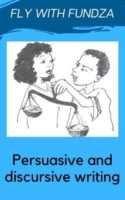One morning at the newspaper stand, two newspapers have very different headlines about the same event.
– Police kill protestor!
– Protestor killed in demonstration
The first headline is in the active voice – the killers are identified as the police, and they are highlighted as the subject of the headline. The second headline does not explain directly who did the killing.
It is easy to see that the first newspaper wanted to make it clear that they hold the police responsible – and their exclamation mark shows their shock and horror too.
However the second headline is actually in the passive. (Of course to be a full sentence it should be: a protestor was killed in the demonstration, but headlines always leave out the small words). This newspaper article is not holding the police to account in the same way, as the killers are not identified in the headline.
The passive can be useful in this way, when you don’t want to highlight the people who carried out the action. Eg A decision was made to close the school. (We don’t get told who made that decision – and so we don’t know who to complain to!)
It is important when you are reading any texts to look at things like this, and see how the writers are trying to influence us. Language is a powerful tool, and we need to recognize how people use it!




